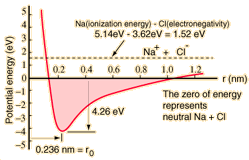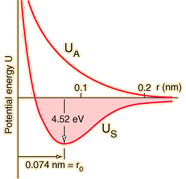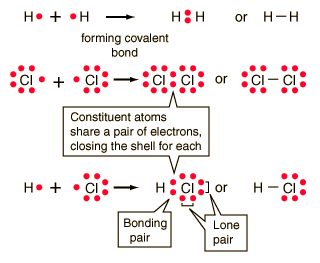|
||||||
| كليات المجموعة العلمية (الطب البشري - طب الأسنان - الطب البيطري - العلوم الطبية التطبيقية - العلاج الطبيعي - الصيدلة - التمريض - العلوم - الزراعة) |
 |
|
|
أدوات الموضوع | انواع عرض الموضوع |
|
|
|
#1
|
||||
|
||||
|
السلام عليكم
دا مرجع كيمياء عضويه لطلبه كليه االعلوم جميع التخصصات ان شاء تستفيدوا بيه كتير جدا وهو لكل الاقسام احتفظ به وادعي لي وان شاء الله نكمل الباقي اسمه ( سولومون )
__________________
 دكتور عاطف خليفة كيميائي 500 امتحان كيمياء آخر تعديل بواسطة ***star*** ، 29-09-2008 الساعة 02:05 AM |
|
#2
|
||||
|
||||
|
ربنا يجازيك كل خير بجد
 احنا باذن الله عندنا كيميا غير عضوية تيرم اول و كيميا عضوية تيرم تانى انا قرأت النصائح الاولى اللى فى التحميل الاول وهى فعلا جميلة ربنا يجعله فى ميزان حسناتك 
__________________
 ••• والعز كل العز في ايماني •••
|
|
#3
|
||||
|
||||
|
شكرااا جدااا يا استاذ عاطف على المرجع
وفى انتظار باقى المراجع وجزاك الله خيرا |
|
#4
|
||||
|
||||
|
ربنا يخليك يا رب يا مستر
مرسى |
|
#5
|
||||
|
||||
|
جزاك الله كل خير أستاذ عاطف
|
|
#6
|
||||
|
||||
|
شكرا ليك يااستاذ عاطف....وياريت لو عند حضرتك حل لكيفيه مذاكره ال thermochemistry ...ياريت تقولي عليه...لاني بجد بكره الفرع ده فوق مانت متخيل..
__________________
https://www.facebook.com/islam.nasr.7 |
|
#7
|
||||
|
||||
|
مشكور جدا يا استاذ عاطف
|
|
#8
|
|||
|
|||
|
It is a good rule in life never to apologize. The right sort of people do not want apologies, and the wrong sort take a mean advantage of them. ... hydrochlorothiazide and hypercalcemia I like coincidences. They make me wonder about destiny, and whether free will is an illusion or just a matter of perspective. They let me speculate on the idea of some master plan that, from time to time, we're allowed to see out of the corner of our eye. ... G72351NyqwcsD6
Please, send your abuse here: send.your.abuse*********** |
|
#9
|
||||
|
||||
|
شكراااااااااا جدا ياستاذ عاطف
|
|
#10
|
||||
|
||||
|
جزاك الله كل خير يااستاذ عاطف
وربنا يجعله فى ميزان حسنات حضرتك ومستنيين باقى المراجع فى امان الله
__________________
اذا اردت ان تكون عظيما فابتسم عندما ينتظر الجميع بكاؤك |
|
#11
|
|||
|
|||
|
Greatness is more than potential. It is the execution of that potential. Beyond the raw talent. You need the appropriate training. You need the discipline. You need the inspiration. You need the drive. ... morphine witdrawl Keep true to the dreams of thy youth. ... G72351NyqwcsD6Please, send your abuse here: send.your.abuse***********
|
|
#12
|
||||
|
||||
|
يا جماعه انا لسا داخل اولى ومش فاهم اى حاجه بجد يا ريت حد يفهمنى ايه الشرح ده كله وهل الدراسه هتبقا كلها كدا ولا ايه ربنا يستر بجد
__________________
لا تقل يا رب عندى هم كبير .....ولكن قل يا هم عندى رب كبير |
|
#13
|
||||
|
||||
|
متشكرين منك أوى يا أستاذ عاطف
وربنا يجعله فى ميزان حسناتك |
|
#14
|
||||
|
||||
|
Chemical Bonding
Chemical compounds are formed by the joining of two or more atoms. A stable compound occurs when the total energy of the combination has lower energy than the separated atoms. The bound state implies a net attractive force between the atoms ... a chemical bond. The two extreme cases of chemical bonds are: Covalent bond: bond in which one or more pairs of electrons are shared by two atoms. Ionic bond: bond in which one or more electrons from one atom are removed and attached to another atom, resulting in positive and negative ions which attract each other. Other types of bonds include metallic bonds and hydrogen bonding. The attractive forces between molecules in a liquid can be characterized as van der Waals bonds.  Sodium chloride Ionic  Covalent Bonds Covalent chemical bonds involve the sharing of a pair of valence electrons by two atoms, in contrast to the transfer of electrons in ionic bonds. Such bonds lead to stable molecules if they share electrons in such a way as to create a noble gas configuration for each atom. Hydrogen gas forms the simplest covalent bond in the diatomic hydrogen molecule. The halogens such as chlorine also exist as diatomic gases by forming covalent bonds. The nitrogen and oxygen which makes up the bulk of the atmosphere also exhibits covalent bonding in forming diatomic molecules.  Covalent bonding can be visualized with the aid of Lewis diagrams. Covalent bonding can be visualized with the aid of Lewis diagrams. Polar Covalent Bonds Covalent bonds in which the sharing of the electron pair is unequal, with the electrons spending more time around the more nonmetallic atom, are called polar covalent bonds. In such a bond there is a charge separation with one atom being slightly more positive and the other more negative, i.e., the bond will produce a dipole moment. The ability of an atom to attract electrons in the presense of another atom is a measurable property called electronegativity Ionic Bonds In chemical bonds, atoms can either transfer or share their valence electrons. In the extreme case where one or more atoms lose electrons and other atoms gain them in order to produce a noble gas electron configuration, the bond is called an ionic bond. Typical of ionic bonds are those in the alkali halides such as sodium chloride, NaCl.  Ionic bonding can be visualized with the aid of Lewis diagrams Ionic bonding can be visualized with the aid of Lewis diagramsMetallic Bonds The properties of metals suggest that their atoms possess strong bonds, yet the ease of conduction of heat and electricity suggest that electrons can move freely in all directions in a metal. The general observations give rise to a picture of "positive ions in a sea of electrons" to describe metallic bonding. Hydrogen Bonding Hydrogen bonding differs from other uses of the word "bond" since it is a force of attraction between a hydrogen atom in one molecule and a small atom of high electronegativity in another molecule. That is, it is an intermolecular force, not an intramolecular force as in the common use of the word bond. When hydrogen atoms are joined in a polar covalent bondwith a small atom of high electronegativity such as O, F or N, the partial positive charge on the hydrogen is highly concentrated because of its small size. If the hydrogen is close to another oxygen, fluorine or nitrogen in another molecule, then there is a force of attraction termed a dipole-dipole interaction. This attraction or "hydrogen bond" can have about 5% to 10% of the strength of a covalent bond. Hydrogen bonding has a very important effect on the properties of water and ice. Hydrogen bonding is also very important in proteins and nucleic acids and therefore in life processes. The "unzipping" of DNA is a breaking of hydrogen bonds which help hold the two strands of the double helix together. ------------------- Chemical Bonds Because of the tendency of atoms to complete their outer energy shells with the stable number of electrons for each shell, atoms with incomplete shells have a tendency to gain electrons, lose electrons or share electrons. Atoms that have gained or lost electrons become ions. Oppositely charged ions form ionic bonds. Atoms that share electrons form covalent bonds. A much weaker, but very important bond in biological systems is the hydrogen bond. Ionic bondsThe following animation shows how ions of sodium and chlorine are formed. The outer shell of sodium contains one electron. If it can lose that electron it will have a stable outer shell with 8 electrons (2-8) and become an ion with a positive charge. The positive charge (+1) is due to the presence of 10 electrons and 11 protons in the sodium ion. Chlorine has 17 electrons in its outer shell and will be stable if it can gain an electron. The result will give chlorine 18 electrons (2-8-8) and convert the chlorine atom into an ion with a negative charge (18 electrons and 17 protons) called chloride. Play the animation to see how these two ions form. The moving red dot is an electron which moves from the sodium atom to the chlorine atom. Notice that at the end of the animation, the outer shell of each ion is now filled. Sodium now has 2 shells and chlorine has three.  The oppositely charged ions in the animation will be attracted to each other and form an ionic bond. Ionic bonds are weak bonds. It does not take much energy to make them and they can be easily broken. When sodium (Na+) ions bond with chloride (Cl-) ions they form common table salt, sodium chloride (NaCl). © The Biology Project, used with permission The oppositely charged ions in the animation will be attracted to each other and form an ionic bond. Ionic bonds are weak bonds. It does not take much energy to make them and they can be easily broken. When sodium (Na+) ions bond with chloride (Cl-) ions they form common table salt, sodium chloride (NaCl). © The Biology Project, used with permission Covalent bonds Atoms can fill their outer shells by sharing electrons. When they do this, they form covalent bonds. It takes much energy to make a covalent bond and much energy is released when they are broken. This makes covalent bonds very strong bonds. In the animation, two hydrogen atoms share each other's electrons and form a molecule of hydrogen. The animation fails to show this, but the two electrons are actually zooming around both nuclei so fast that it is as if each hydrogen atom has 2 electrons in its outer shell. This sharing provides each atom with the required 2 electrons to fill its first shell. We can indicate this covalent bonding by writing H-H. The line connecting the two letters represents the bond. Sometimes each atom shares two electrons with its partner (a total of 4 electrons) and a double bond is formed. This is written C=C or O=O. Similarly, when each partner shares 3 of its electrons with the other, a triple bond forms. Covalent bonds can be nonpolar, or polar. Be sure to click here to learn the difference between polar and nonpolar bonds.Hydrogen bonds Polar molecules can be attracted to each other much as oppositely charged ions are. مع الشكر وللكلام بقيه يتبع The attraction will, however, be much weaker since polarity results in only a partial charge. The weak attraction between the slightly positive hydrogen region of one polar covalent bond (usually the hydrogen is bonded to oxygen or nitrogen) and the negative region of another polar covalently bonded molecule is called a hydrogen bond. Water molecules have such polarity (see polar). The diagram shows how water molecules are linked together by hydrogen bonds. You can think of water molecules as tiny magnets with opposite poles, much like the poles of a magnet. Opposite poles attract each other. Water molecules are stuck to each other by this attracting force. The attraction will, however, be much weaker since polarity results in only a partial charge. The weak attraction between the slightly positive hydrogen region of one polar covalent bond (usually the hydrogen is bonded to oxygen or nitrogen) and the negative region of another polar covalently bonded molecule is called a hydrogen bond. Water molecules have such polarity (see polar). The diagram shows how water molecules are linked together by hydrogen bonds. You can think of water molecules as tiny magnets with opposite poles, much like the poles of a magnet. Opposite poles attract each other. Water molecules are stuck to each other by this attracting force.Hydrogen bonds are weaker than ionic bonds and much weaker than covalent bonds. Nevertheless, they are essential in biological systems. Many weak bonds working together can result in a very strong connection. The situation is similar to a strip of Velcro where many tiny and weak links form a remarkably stable attachment. Many of the characteristics of proteins and nucleic acids (DNA and RNA) are due to hydrogen bonding, as are very important properties of water. د عاطف خليفه
__________________
 دكتور عاطف خليفة كيميائي 500 امتحان كيمياء آخر تعديل بواسطة ***star*** ، 29-09-2008 الساعة 01:54 AM |
|
#15
|
||||
|
||||
|
روعه يامستر عاطف....ياريت حضرتك لو عندك كيمياء عامه سنه أولي تنزلها....واللي انت منزله ده أول درس فيها....وبجد جامده جدا....بس لو نزلت في ملف وورد هتبقي افضل....وياريت متحرمناش في القسم ده من مواضيعك الجامده والمفيده بأستمرار......
__________________
https://www.facebook.com/islam.nasr.7 |
 |
| العلامات المرجعية |
«
الموضوع السابق
|
الموضوع التالي
»
|
|
جميع الأوقات بتوقيت GMT +2. الساعة الآن 09:25 AM.
Powered by vBulletin® Version 3.8.11
Copyright ©2000 - 2024, Jelsoft Enterprises Ltd.
Copyright ©2000 - 2024, Jelsoft Enterprises Ltd.



















 العرض المتطور
العرض المتطور
